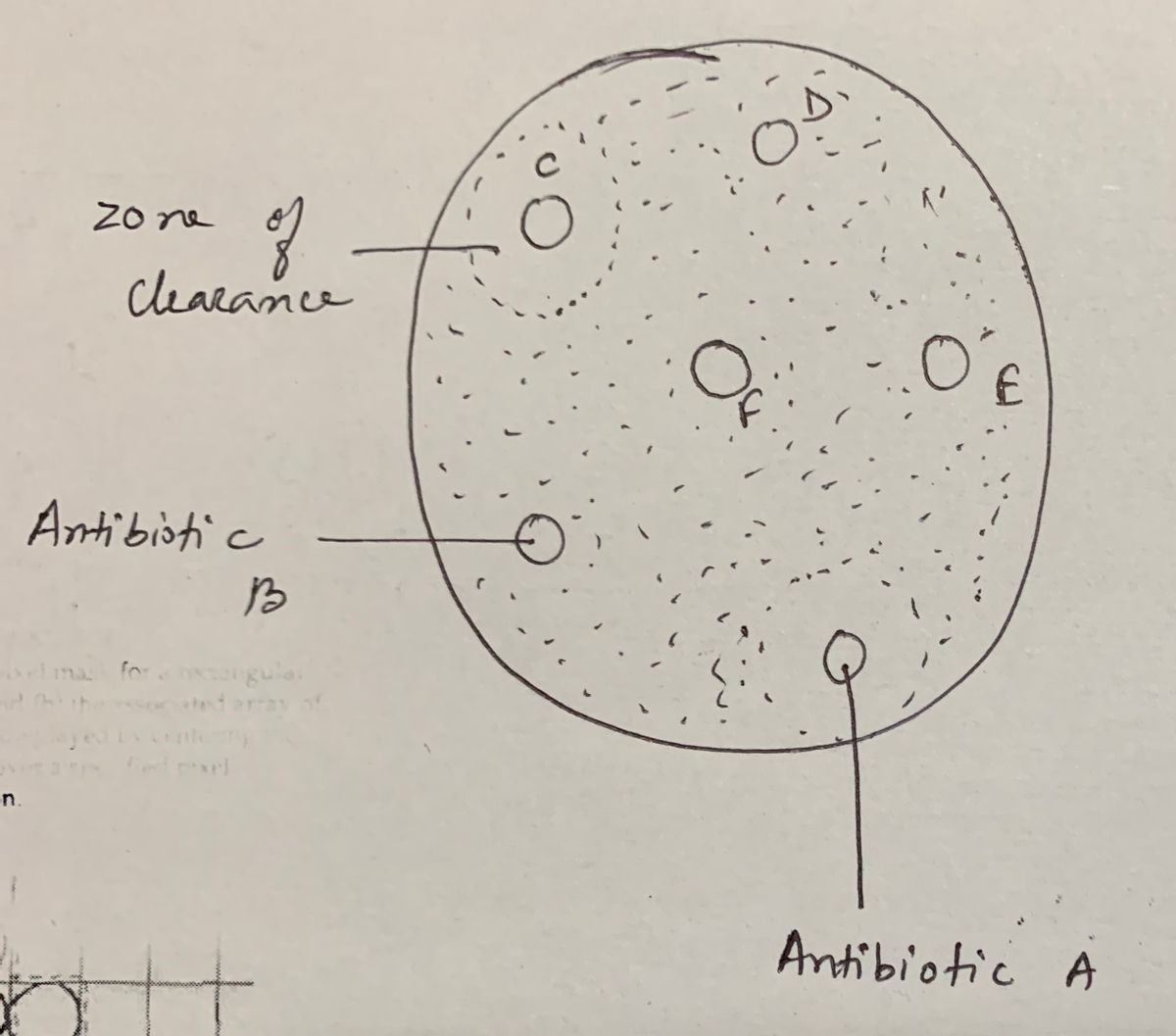4. From all antiseptics & disinfectants tested in class which agent worked the best against Staphylococcus & Pseudomonas? What part of the cell was effected by the control method?
4. From all antiseptics & disinfectants tested in class which agent worked the best against Staphylococcus & Pseudomonas? What part of the cell was effected by the control method?
Human Anatomy & Physiology (11th Edition)
11th Edition
ISBN:9780134580999
Author:Elaine N. Marieb, Katja N. Hoehn
Publisher:Elaine N. Marieb, Katja N. Hoehn
Chapter1: The Human Body: An Orientation
Section: Chapter Questions
Problem 1RQ: The correct sequence of levels forming the structural hierarchy is A. (a) organ, organ system,...
Related questions
Question
4. From all antiseptics & disinfectants tested in class which agent worked the best against Staphylococcus & Pseudomonas? What part of the cell was effected by the control method?

Transcribed Image Text:**Table: Inhibition Diameter of Various Agents Against Bacteria**
This table displays the inhibition diameters (in millimeters) for different agents when tested against two bacterial species: *Staphylococcus* (#2) and *Pseudomonas* (#8). The inhibition diameter reflects the effectiveness of each agent in inhibiting bacterial growth.
| Agent | *Staphylococcus* (#2) | *Pseudomonas* (#8) |
|----------------|-----------------------|--------------------|
| 3% H2O2 | 37 mm | 85 mm |
| 10% Bleach | 40 mm | 54 mm |
| 5% Lysol | 25 mm | 13 mm |
| Betadine | 34 mm | 18 mm |
| Soap | 30 mm | 0 mm |
| Scope | 31 mm | 0 mm |
| Listerine | 0 mm | 0 mm |
| Vinegar | 55 mm | 28 mm |
| Corn Syrup | 0 mm | 0 mm |
| Lemon Juice | 35 mm | 13 mm |
| 70% Alcohol | 26 mm | 18 mm |
### Observations:
- *3% H2O2* shows significant inhibitory effects on both bacteria, especially *Pseudomonas*.
- *10% Bleach* also inhibits both bacteria, though less effectively than H2O2.
- *Soap* and *Scope* are effective against *Staphylococcus* but show no effect on *Pseudomonas*.
- Substances like *Listerine* and *Corn Syrup* exhibit no inhibitory effect on either bacterium.
- *Vinegar* has one of the highest inhibition effects on *Staphylococcus*.
### Conclusion:
Different agents have varying levels of effectiveness against bacterial species. While some agents like hydrogen peroxide and bleach show broad-spectrum efficacy, others such as soap and vinegar display selective antibacterial properties.
Expert Solution
Step 1
In disk test, by looking at the zone of inhibition, one can say which antiseptics & disinfectants tested worked the best against the studied microorganisms. The higher the diameter of zone of inhibition, higher is the susceptibility of the microorganisms towards that antiseptics & disinfectant.

Step by step
Solved in 2 steps with 1 images

Knowledge Booster
Learn more about
Need a deep-dive on the concept behind this application? Look no further. Learn more about this topic, biology and related others by exploring similar questions and additional content below.Recommended textbooks for you

Human Anatomy & Physiology (11th Edition)
Biology
ISBN:
9780134580999
Author:
Elaine N. Marieb, Katja N. Hoehn
Publisher:
PEARSON

Biology 2e
Biology
ISBN:
9781947172517
Author:
Matthew Douglas, Jung Choi, Mary Ann Clark
Publisher:
OpenStax

Anatomy & Physiology
Biology
ISBN:
9781259398629
Author:
McKinley, Michael P., O'loughlin, Valerie Dean, Bidle, Theresa Stouter
Publisher:
Mcgraw Hill Education,

Human Anatomy & Physiology (11th Edition)
Biology
ISBN:
9780134580999
Author:
Elaine N. Marieb, Katja N. Hoehn
Publisher:
PEARSON

Biology 2e
Biology
ISBN:
9781947172517
Author:
Matthew Douglas, Jung Choi, Mary Ann Clark
Publisher:
OpenStax

Anatomy & Physiology
Biology
ISBN:
9781259398629
Author:
McKinley, Michael P., O'loughlin, Valerie Dean, Bidle, Theresa Stouter
Publisher:
Mcgraw Hill Education,

Molecular Biology of the Cell (Sixth Edition)
Biology
ISBN:
9780815344322
Author:
Bruce Alberts, Alexander D. Johnson, Julian Lewis, David Morgan, Martin Raff, Keith Roberts, Peter Walter
Publisher:
W. W. Norton & Company

Laboratory Manual For Human Anatomy & Physiology
Biology
ISBN:
9781260159363
Author:
Martin, Terry R., Prentice-craver, Cynthia
Publisher:
McGraw-Hill Publishing Co.

Inquiry Into Life (16th Edition)
Biology
ISBN:
9781260231700
Author:
Sylvia S. Mader, Michael Windelspecht
Publisher:
McGraw Hill Education